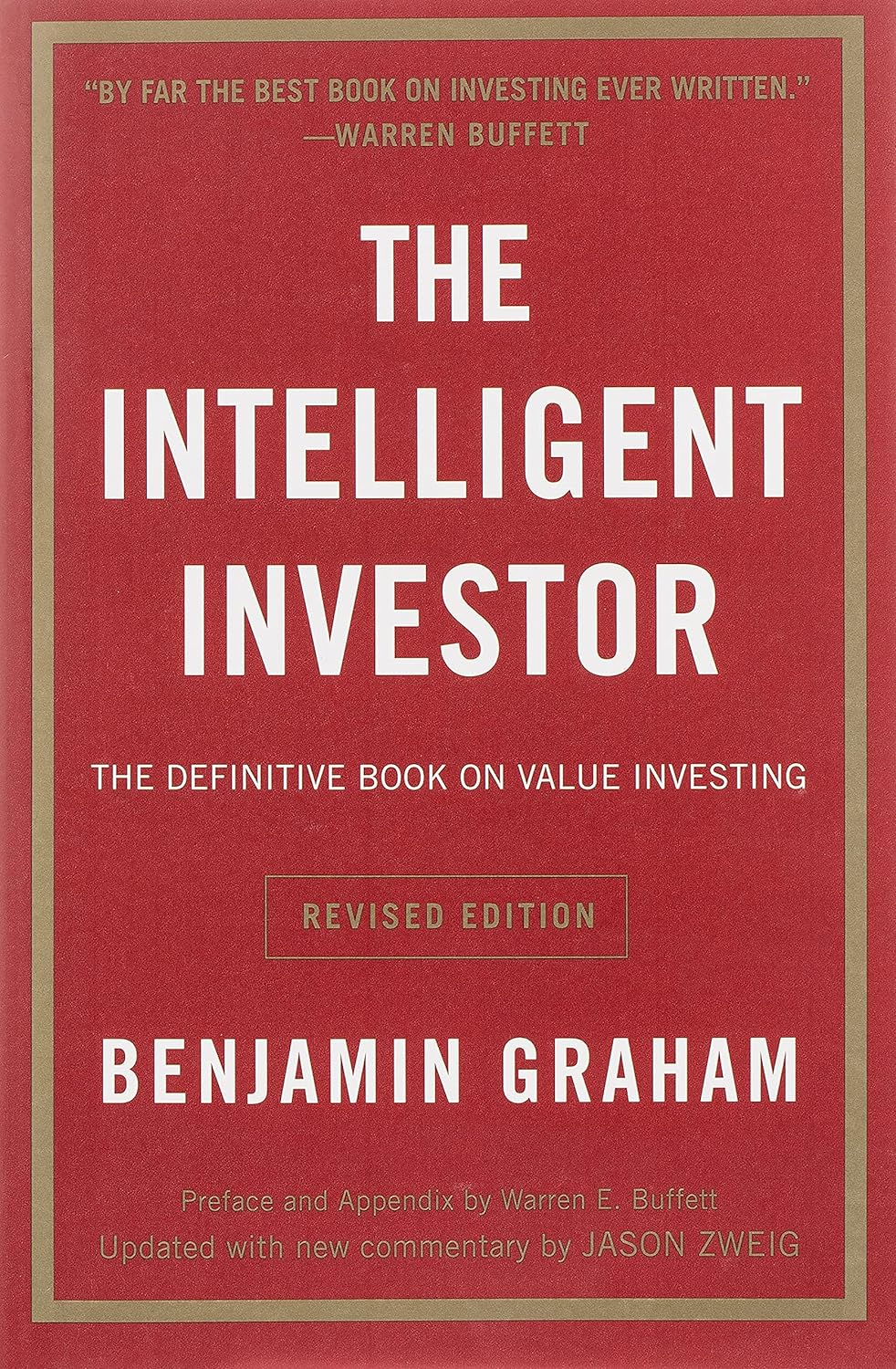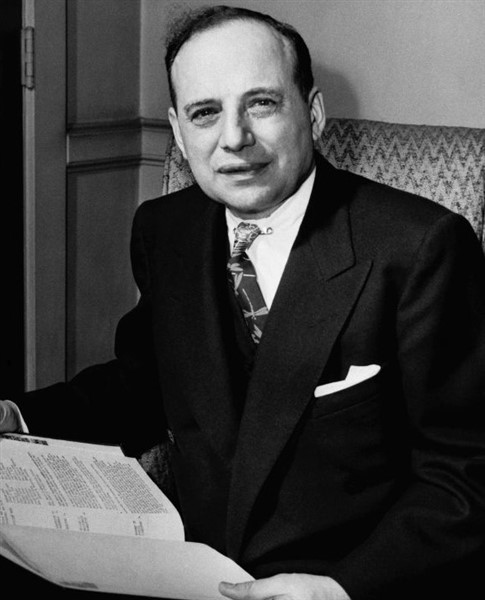
Introduction
“The Intelligent Investor,” originally written by Benjamin Graham and revised on February 21, 2006, with contemporary commentary by Jason Zweig, continues to stand as a seminal work in the field of investment. Benjamin Graham, often hailed as the father of value investing, presents timeless principles and strategies aimed at helping investors make rational and informed decisions. Zweig’s commentary contextualizes these principles for the modern reader, enhancing the book’s relevance in today’s dynamic financial landscape.
Benjamin Graham

Warren Buffett said “The Intelligent Investor” was “By far the BEST book on Investing ever written.”
Core Themes and Principles of The Intelligent Investor
The revised edition of The Intelligent Investor retains the essence of Graham’s original work, emphasizing the distinction between investment and speculation, the importance of a margin of safety, and the value of a disciplined investment approach. Zweig’s additions enrich the text by providing modern examples and insights that align Graham’s philosophies with current market realities.
- The Concept of Mr. Market: Graham’s allegory of Mr. Market remains a powerful tool for understanding market behavior. Mr. Market, with his erratic and often irrational price offerings, represents the fluctuations and emotional swings of the stock market. Graham advises investors to view Mr. Market’s offers with skepticism, buying undervalued stocks and selling them when overpriced.
- Margin of Safety: The concept of margin of safety is central to Graham’s investment philosophy. By purchasing securities at prices significantly below their intrinsic value, investors create a buffer against errors in judgment or unforeseen market downturns. This principle encourages a cautious and conservative approach, reducing the risk of substantial losses.
- Defensive vs. Enterprising Investor: Graham categorizes investors into defensive and enterprising types. Defensive investors seek minimal effort and risk, opting for a diversified portfolio of high-quality stocks and bonds. Enterprising investors, willing to engage in more intensive research and analysis, pursue higher returns by identifying undervalued securities through rigorous analysis.
Jason Zweig’s Commentary
Zweig’s contributions to the revised edition are invaluable, offering a bridge between Graham’s mid-20th-century insights and the complexities of the 21st-century market. His commentary provides practical applications of Graham’s principles, making the book more accessible to contemporary readers.
- Modern Examples: Zweig uses recent market events and examples to illustrate Graham’s concepts. This helps readers understand how to apply value investing principles in today’s context, dealing with modern financial instruments and market conditions.
- Behavioral Finance Insights: Zweig introduces elements of behavioral finance, exploring how psychological factors influence investor behavior. This aligns well with Graham’s emphasis on the importance of emotional discipline, adding depth to the discussion of market irrationality and investor decision-making.
- Updated Financial Metrics: Zweig updates Graham’s financial metrics and analysis techniques, ensuring they remain relevant. He discusses current valuation methods and tools, providing readers with practical guidance on how to assess the intrinsic value of modern companies.
Detailed Analysis of Investment Strategies
The revised edition meticulously details strategies for both defensive and enterprising investors. Graham’s advice on stock and bond selection is presented with clarity, supplemented by Zweig’s contemporary insights.
- Stock Selection for Defensive Investors: Graham advises defensive investors to focus on high-quality stocks with a long history of profitability and strong financial condition. Zweig enhances this by discussing modern screening tools and metrics that can help identify such stocks, emphasizing the importance of diversification to mitigate risk.
- Stock Selection for Enterprising Investors: For enterprising investors, Graham outlines a more detailed approach involving financial statement analysis to find undervalued stocks. Zweig complements this by highlighting recent examples of successful value investments and discussing contemporary tools and databases that can aid in the research process.
- Bond Selection: Graham’s advice on bond selection remains relevant, with an emphasis on high-grade corporate and government bonds. Zweig updates this by discussing the current bond market environment, credit rating agencies, and the impact of interest rates on bond prices.
Relevance to Modern Investing
Despite the passage of time, the principles outlined in “The Intelligent Investor” remain remarkably relevant. Graham’s focus on disciplined investing, the importance of emotional stability, and the distinction between investment and speculation are especially pertinent in today’s volatile market conditions.
Zweig’s commentary ensures that readers can apply Graham’s timeless wisdom to modern investment challenges. He provides actionable advice and updated strategies, making the book a comprehensive guide for both novice and experienced investors.
Critical Perspective
While the revised edition of The Intelligent Investor is widely praised, it is not without its criticisms. Some readers find the original text dense and challenging, despite Zweig’s efforts to simplify and modernize the content. The book’s conservative approach may also seem outdated to those seeking quicker returns through more speculative investments.
Furthermore, the financial landscape has evolved significantly, introducing new complexities that Graham could not have anticipated. While Zweig’s updates help bridge this gap, readers must still supplement the book with additional research and insights to fully navigate the contemporary market.
Conclusion
The revised edition of “The Intelligent Investor” by Benjamin Graham, with commentary by Jason Zweig, is an indispensable resource for anyone serious about investing. The principles of value investing, the emphasis on a margin of safety, and the distinction between investment and speculation provide a solid foundation for making sound financial decisions. Zweig’s contributions modernize and contextualize Graham’s wisdom, making it accessible and relevant to today’s investors. Despite its challenges, the book remains a timeless guide, offering valuable lessons that continue to resonate in the ever-changing world of finance.
Check out The Intelligent Investor on Amazon.
.
About Jason Zweig

.
Jason Zweig writes The Intelligent Investor column for The Wall Street Journal and also occasionally writes Back in Business, a column focused on financial history.
Jason is the author of Your Money and Your Brain, which explores the neuroscience of investing.
Prior to joining The Wall Street Journal, Jason contributed to Daniel Kahneman’s book Thinking, Fast and Slow. He was also a senior writer for Money magazine, a guest columnist for Time magazine and CNN.com, and a senior editor at Forbes magazine. Additionally, he spent a year studying Middle Eastern history and culture at the Hebrew University of Jerusalem.
Check out Jason Zweig on Amazon.
If you liked this review please share it with your friends and family, and why not check out our review of Top 10 books on Making Money online (maybe)
.

Pingback: The Little Book of Common Sense Investing by John C. Bogle - Fatty Daddy Review